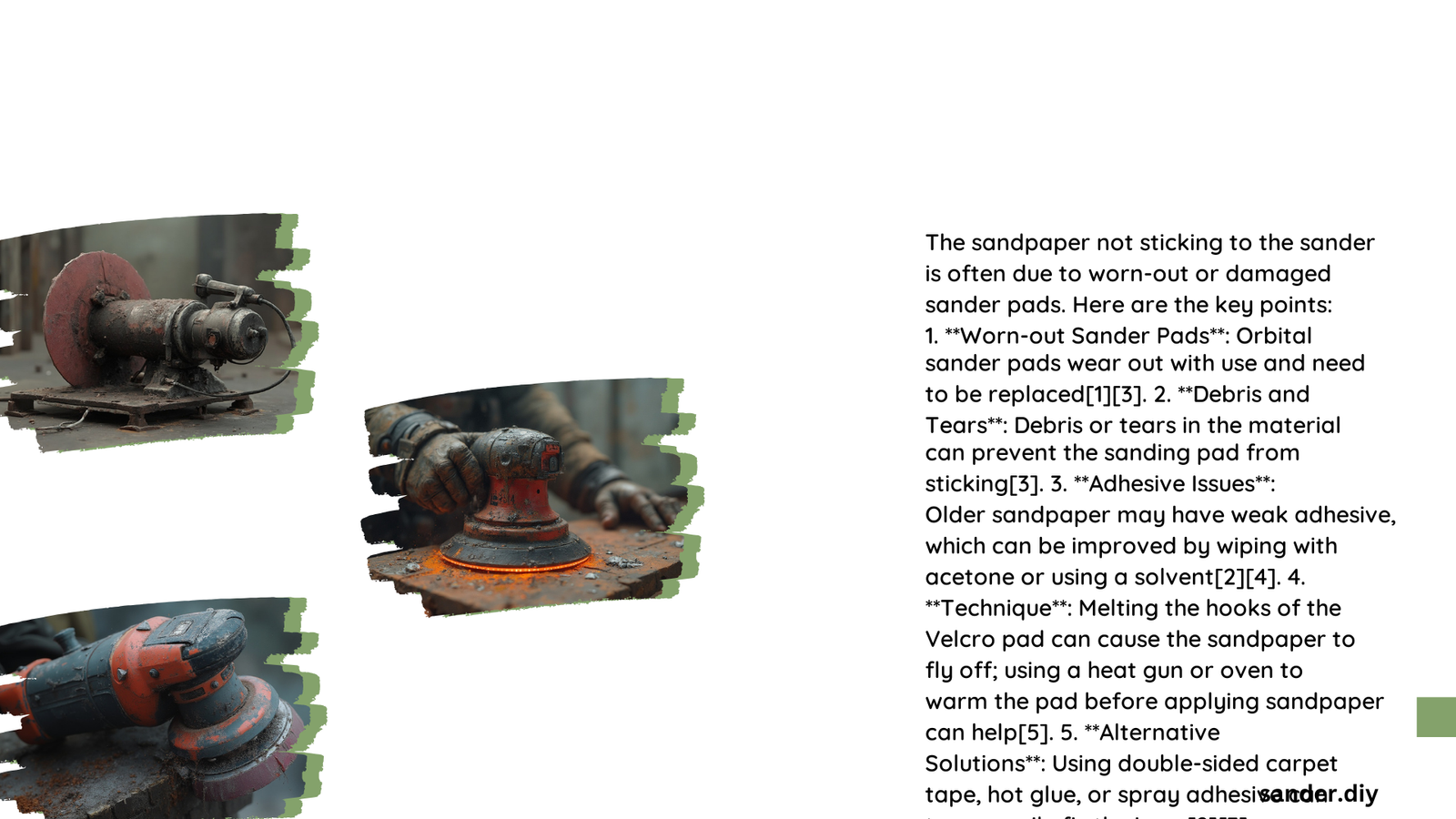Sandpaper detachment during sanding can frustrate even experienced woodworkers and DIY enthusiasts. When sandpaper fails to stick to your sander, it disrupts workflow, reduces efficiency, and potentially damages your project surface. Understanding the root causes and implementing strategic solutions can help you overcome this common workshop challenge and maintain optimal sanding performance.
Why Does Sandpaper Detach from Sander?
What Causes Adhesion Failure?
Sandpaper adhesion problems stem from multiple interconnected factors:
- Physical Pad Conditions
- Worn-out hook and loop surfaces
- Accumulated dust and debris
- Surface contamination
-
Degraded adhesive properties
-
Environmental Factors
- Temperature variations
- Humidity levels
- Storage conditions
- Age of sandpaper
How to Diagnose Sandpaper Attachment Issues?
| Symptom | Potential Cause | Recommended Action |
|---|---|---|
| Sandpaper slides immediately | Dirty pad surface | Clean pad thoroughly |
| Partial detachment | Worn hook and loop | Replace sander pad |
| Inconsistent grip | Old/expired sandpaper | Use fresh sandpaper |
Comprehensive Troubleshooting Strategies

What Cleaning Techniques Improve Adhesion?
Effective cleaning methods include:
– Use mineral spirits for thorough pad cleaning
– Apply compressed air to remove fine dust particles
– Utilize specialized pad cleaning solutions
– Gently scrub with soft-bristled brush
How to Prepare Sander Pad for Maximum Grip?
Preparation steps:
1. Ensure pad is completely dry
2. Warm pad to 70-100°F using heat gun
3. Check for visible damage or wear
4. Verify compatibility with sandpaper type
What Are Professional Maintenance Techniques?
Professional woodworkers recommend:
– Regular pad inspection
– Periodic replacement of hook and loop surfaces
– Using high-quality sandpaper
– Storing sandpaper flat and protected
Advanced Adhesion Enhancement Methods
Can Additional Adhesives Help?
Supplemental adhesion techniques:
– Apply thin layer of spray adhesive
– Use temporary mounting adhesives
– Consider specialized mounting discs
– Experiment with different backing materials
What Preventive Measures Ensure Consistent Performance?
Preventive strategies:
– Invest in quality sander pads
– Maintain consistent workshop temperature
– Control humidity levels
– Store sandpaper in sealed containers
– Rotate sandpaper stock regularly
Technical Considerations
Which Sandpaper Backing Works Best?
Backing material performance:
– Cloth-backed: Most reliable adhesion
– Paper-backed: Limited durability
– Film-backed: Precision applications
How Often Should Equipment Be Replaced?
Replacement guidelines:
– Sander pad: Every 5-10 years
– Sandpaper: After significant wear
– Hook and loop surface: When grip weakens
Final Recommendations
Successful sandpaper adhesion requires:
– Regular maintenance
– Proper cleaning
– Quality equipment
– Understanding environmental factors
By implementing these strategies, woodworkers can minimize sandpaper detachment and maintain consistent, high-quality sanding performance.
Pro Tip: Always test sandpaper adhesion before starting critical projects to prevent unexpected failures.
